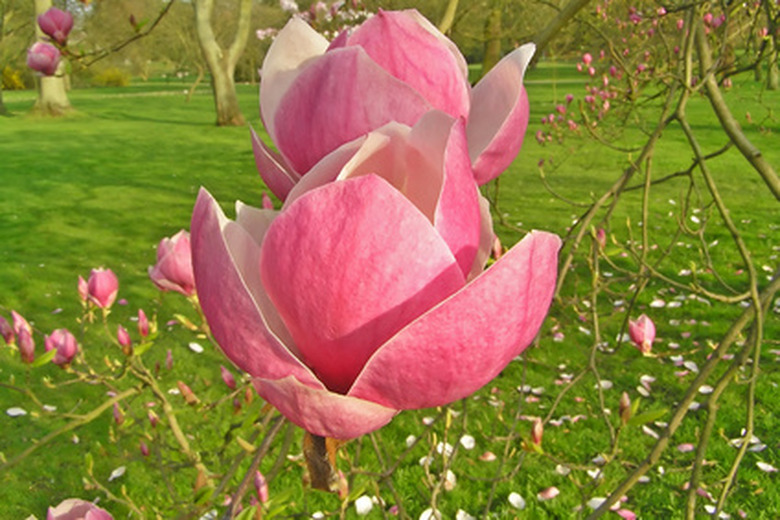Soil Types For Magnolia
The ideal soil for any magnolia is acidic, consistently moist and cool, and never floods after a rainstorm. Most magnolias adapt to slightly less than optimal growing conditions if the soil never becomes too dry or its shallow root system is not trampled, compacted or broken by a digging shovel's blade.
Sand
Sand-based soils drain well, but may dry out quickly if organic matter is lacking. You can improve sandy soils before planting a magnolia by adding acid-forming organic matter–such as compost of oak leaves, coffee grounds, and the bark and needles of conifers. Sandy soils do not compact easily, but can warm and cool quickly to the detriment of a plant. A thick layer of mulch, 4 to 5 inches in depth, atop the root system of a magnolia will aid in moderating soil temperatures–particularly in the summer heat. The mulch also retains soil moisture. In general, magnolias planted in sandy soils should not be exposed to drying winds and full sun exposures.
- The ideal soil for any magnolia is acidic, consistently moist and cool, and never floods after a rainstorm.
- Sandy soils do not compact easily, but can warm and cool quickly to the detriment of a plant.
Loam
Acidic, loamy soils provide perfect growing conditions for magnolias in partial sun exposures. Neither too porous nor dense, the loam soil retains moisture well while still facilitating drainage to prevent magnolia tree roots from being waterlogged. However, a slightly denser texture leads loam-based soils to compact more readily than sandy soils. A thick layer of organic mulch, 3 to 5 inches in depth, on top of the root system will diminish lawn equipment weight or footsteps from compacting soil atop the tender, sensitive magnolia's roots. If loam is dark colored, the mulch also shades the roots–keeping the soil cooler in summer while the magnolia is actively growing.
Clay
Clay soils that are moist and acidic support magnolia growth well–as long as the soil is well-draining and never floods. Clay soils compact and harden readily, more so than loams, and lead to damage to the shallow roots of magnolias. While clay retains moisture well, the effects of drying out and compaction by lawn equipment wheels or foot traffic are exacerbated. The use of a protective layer of organic mulch, 4 to 5 inches in depth, on clay soils acts foremost to prevent soil compaction while moist. Clay soils that dry out around magnolia trees lead to marked root and branch tip die-back. If water drainage in clay is not good, consider planting the magnolia's root ball slightly higher than grade. Magnolias planted in consistently moist, clay soils tolerate full sun exposures and slightly windier locations.
- Acidic, loamy soils provide perfect growing conditions for magnolias in partial sun exposures.
- Neither too porous nor dense, the loam soil retains moisture well while still facilitating drainage to prevent magnolia tree roots from being waterlogged.
